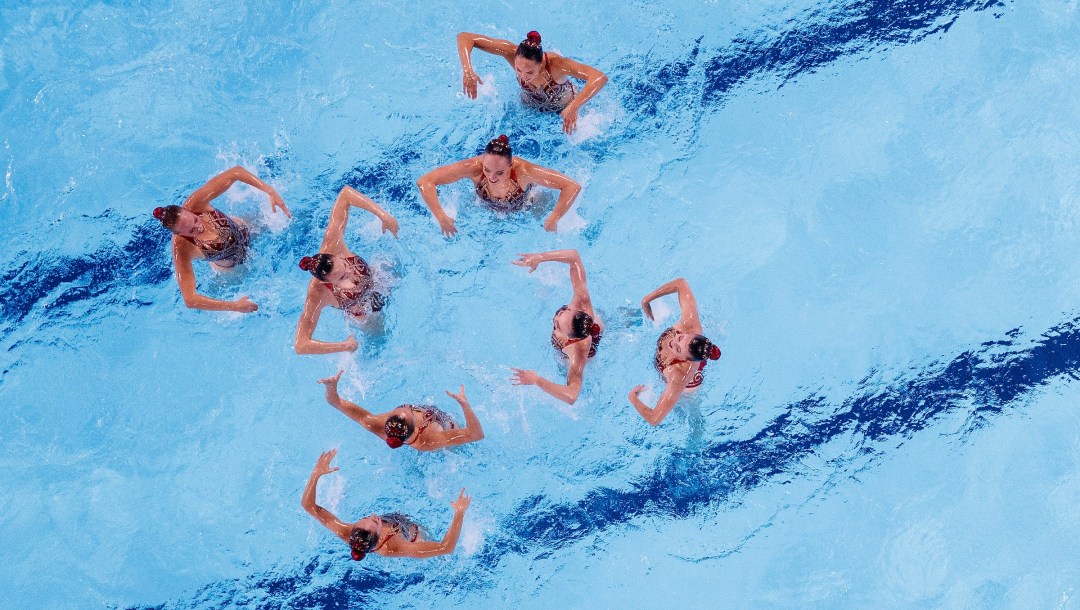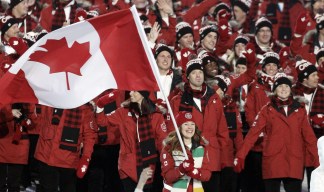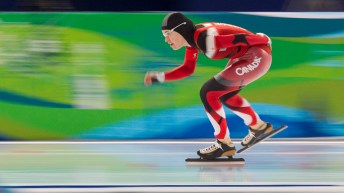Artistic Swimming
Team Canada Medal Count
Sport Overview
Artistic Swimming at Paris 2024
Venue: Aquatics Centre
Competition Dates: August 5-7, 9-10 (Days 10-12, 14-15)
Events: 2
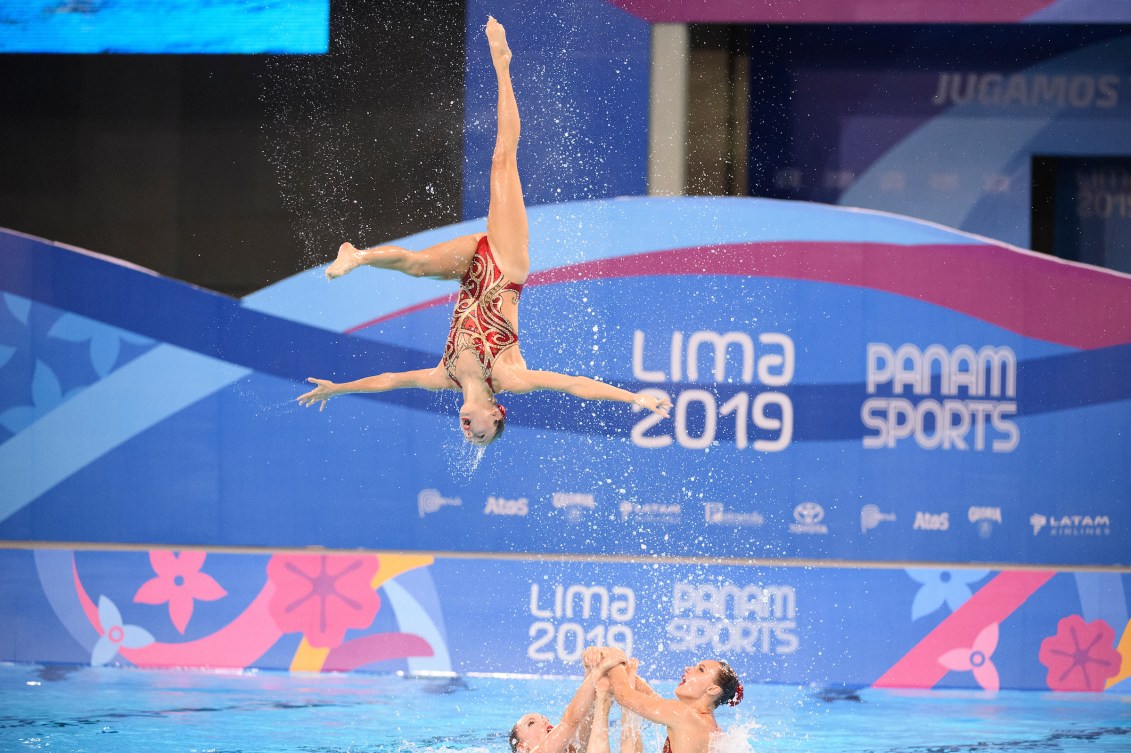
Formerly known as synchronized swimming, there are two artistic swimming events on the Olympic program: duet and team.
From its Olympic debut at Los Angeles 1984 through to Tokyo 2020, only women were allowed to compete in artistic swimming. Starting at Paris 2024, each team of eight individuals may include up to two men.
The duet event features two types of routines: technical and free. The team event now includes three types of routines: technical, free, and acrobatic. All routines should exhibit the defining aspect of artistic swimming – unified movement in time to music.
The primary feature of technical routines are their required elements, which does include one required acrobatic. Free routines provide more freedom of choice as to the elements and movements included. In acrobatic routines, the focus is on the difficulty of the seven acrobatic tricks performed.
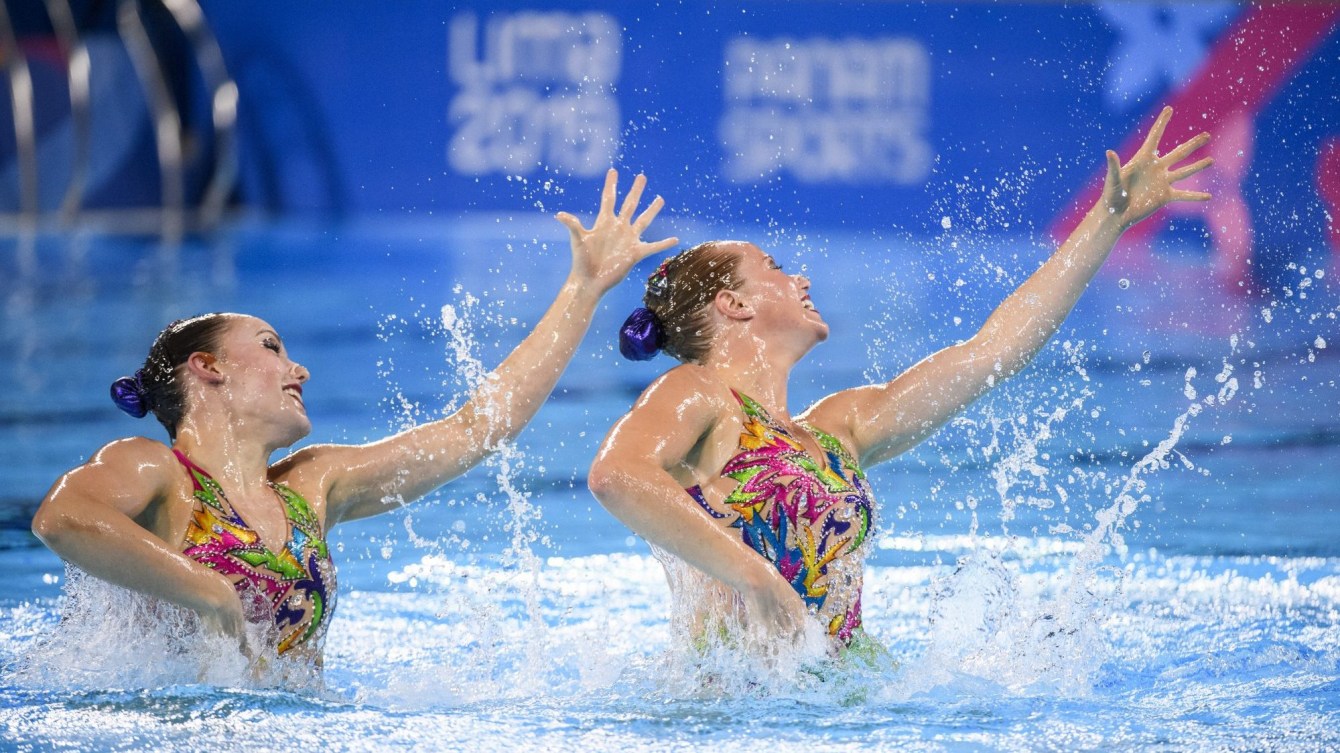
Each routine is evaluated by two panels of five judges. One panel scores the execution of the elements performed while the other evaluates the artistic impression (choreography and musicality, performance, transitions). Each judge awards points from 0 to 10 in increments of 0.25. For example, an element deemed to be perfect would score a 10. An excellent element would be scored 9.0 to 9.25. A good element will fall in the 7.0 to 7.75 range. A very weak element would be scored from 2.0 to 2.75.
The difficulty level of each element is verified by a separate panel of technical controllers, while errors in synchronization are recorded by other technical controllers and lead to a deduction in the routine score.

In the duet competition, the scores from the technical routine and free routine are added together to determine the final results. Duet technical routines are two minutes 20 seconds while duet free routines are two minutes 45 seconds.
The final results of the team competition are based on the combined scores from the technical, free, and acrobatic routines. Team technical routines are two minutes 50 seconds, team free routines are three minutes 30 seconds, and team acrobatic routines are three minutes. All routine times include 10 seconds for deck movement prior to the swimmers diving into the water.
Canada’s Olympic Artistic Swimming History (Pre-Paris 2024)
Canada has won eight Olympic medals in artistic swimming. In the sport’s debut at Los Angeles 1984, Carolyn Waldo won silver in the solo event while Sharon Hambrook and Kelly Kryczka added a silver in the duet. Four years later, Waldo was Canada’s only double medallist at Seoul 1988, winning gold in the solo and in the duet with partner Michelle Cameron.
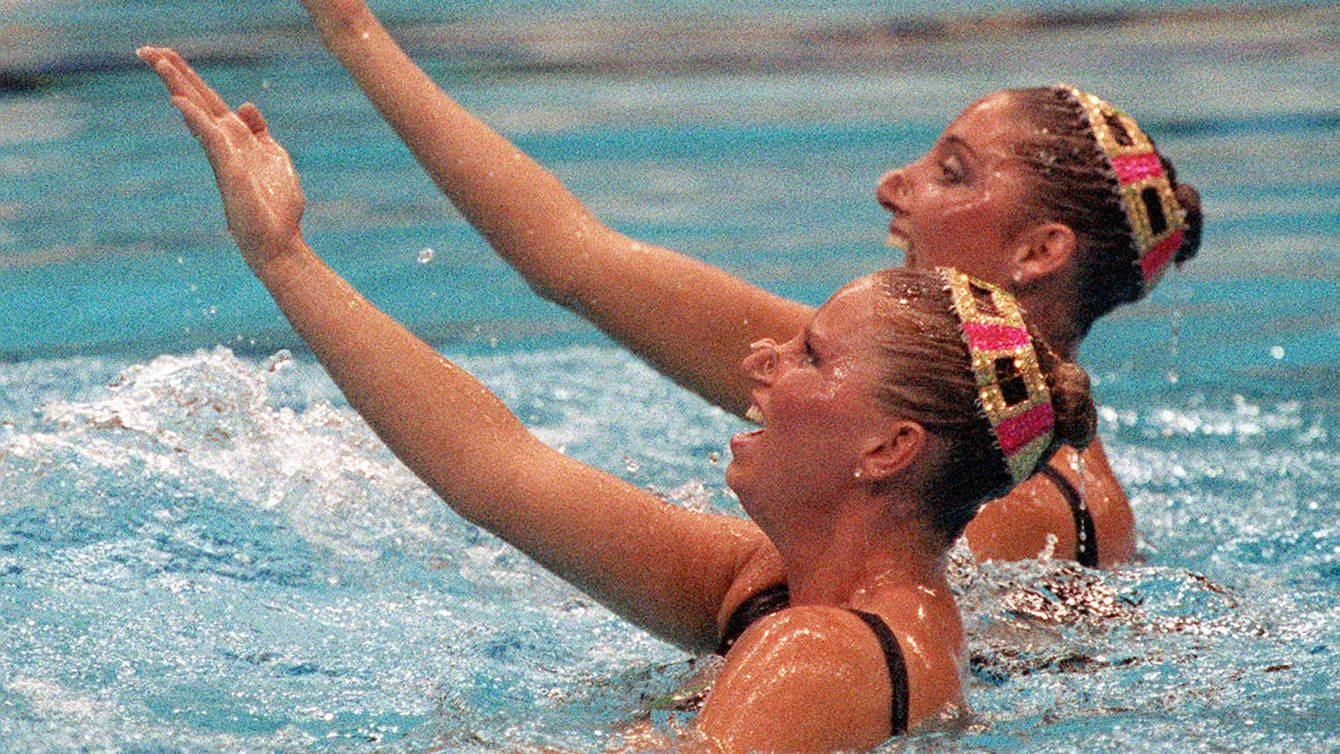
Canada won two more medals at Barcelona 1992, highlighted by Sylvie Fréchette’s solo gold. Initially awarded silver due to a judge mistakenly entering an erroneous score, Fréchette received her gold medal in late 1993. Twins Vicky and Penny Vilagos added a silver in the duet, Canada was also on the podium at the first two Games to include the team event, winning silver at Atlanta 1996 and bronze at Sydney 2000.
Canada has competed in every Olympic artistic swimming event with the exception of the team event at Rio 2016.

Olympic Artistic Swimming History
When artistic swimming joined the Olympic program at Los Angeles 1984, it included solo and duet events. Those events were also contested at Seoul 1988 and Barcelona 1992. At Atlanta 1996, the program changed to only include a team event, with eight athletes per team. Starting at Sydney 2000, there were once again two events as the duet was added back to the Olympic program.
Canadian Medallists
| Event | Athlete | Finish | Games |
|---|---|---|---|
| Solo - Women | Carolyn Waldo | Gold | Seoul 1988 |
| Duet - Women | Carolyn Waldo, Michelle Cameron | Gold | Seoul 1988 |
| Solo - Women | Sylvie Fréchette | Gold | Barcelona 1992 |
| Duet - Women | Kelly Kryczka, Sharon Hambrook | Silver | Los Angeles 1984 |
| Solo - Women | Carolyn Waldo | Silver | Los Angeles 1984 |
| Duet - Women | Penny Vilagos, Vicky Vilagos | Silver | Barcelona 1992 |
| Team - Women | Cari Read, Christine Larsen, Erin Woodley, Janice Bremner, Karen Clark, Karen Fonteyne, Kasia Kulesza, Lisa Alexander, Sylvie Fréchette, Valerie Hould-Marchand | Silver | Atlanta 1996 |
| Team - Women | Catherine Garceau, Claire Carver-Dias, Erin Chan, Fanny Létourneau, Jacinthe Taillon, Jessica Chase, Kirstin Normand, Lyne Beaumont, Reidun Tatham | Bronze | Sydney 2000 |

